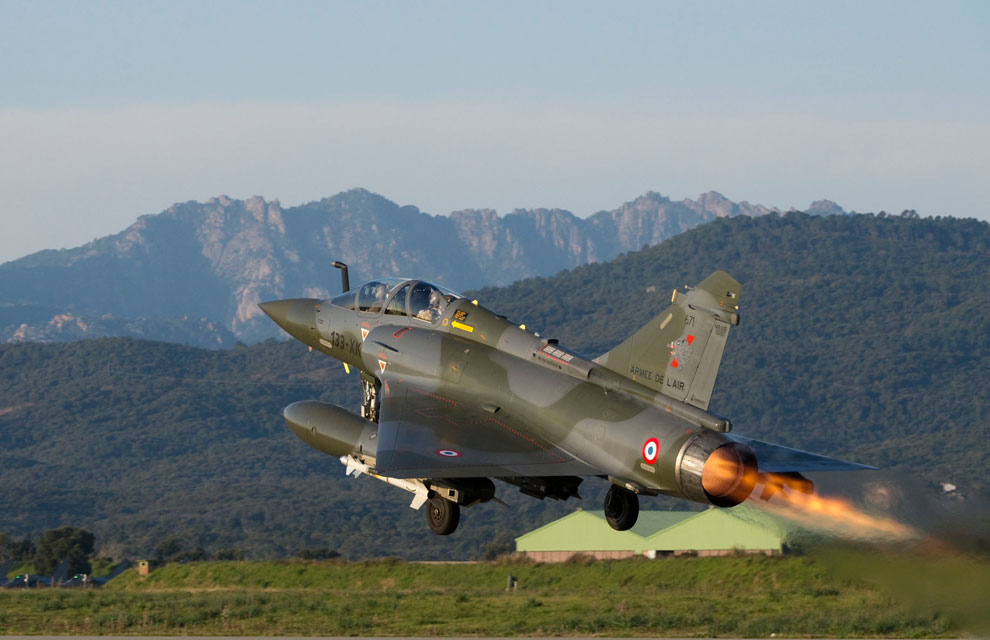Previous debriefings:
In Brega, the Libyan oil town located in the Sirte basin SSE of Benghazi, rebels are pressing on to the front line. More uniformed and better disciplined soldiers seem to be bolstering the usual disorganised opposition fighters, but neither side is currently able to claim control of the town. Rebels without proper training and equipment that weakened the oppositors at the front, are now used as backup force since their great enthusiasm is not enough and in the past days they were getting trounced by Gaddafi’s better trained and equipped soldiers. However, since Friday Apr. 1, the Associated Press has reported that only former officers and volunteers with at least a basic training are allowed to serve on the front lines: “the better organized fighters, unlike some of their predecessors, can tell the difference between incoming and outgoing fire. They know how to avoid sticking to the roads, a weakness in the untrained forces that Qaddafi’s troops have exploited. And they know how to take orders”.
Airstrikes were reported in Tripoli and Ajdabiya, where coalition hit a vehicle which was full of ammunition and exploded killing 7 and injuring 25 civilians (figures to be confirmed). According to Al Jazeera, it is still unclear as to whether the ammunition-laden vehicle was destroyed by artillery, mortars, an airstrike or some other cause and that while NATO has launched an inquiry into the mishap, without ground forces to verify the on-the-ground scene and evidence, it would be almost impossible to determine exactly what happened.
While Italian Foreign Minister Franco Frattini said Italy has not ruled out the possibility of arming the Libyan opposition, but that to do so would be an “extreme measure” if it became the only possible option to protect Libyan civilians to be attacked by government forces, the Associated Press, quite surprisingly reported in the late evening that the US will stop launching Tomahawk cruise missiles, in addition to pulling attack aircraft out of operations, in the Mediterranean theatre as early as Apr. 2. The news came from the Defense Secretary Robert Gates the day after he and Adm. Mike Mullen, the chairman of the Joint Chiefs of Staff, had announced that AC-130 gunships and the A-10s, used for close air support of friendly ground forces, were to stop flying after Saturday and put on standby, meaning that if the rebels’ situation became critical, the NATO commander could request help from the US (that will still continue to provide support missions, as AAR, SAR and recon).
Other interesting things, information and thoughts:
1) Let’s focus on other things that Mullen said.
Yesterday, in my Day 13 debrief I wrote:
Furthermore, it seems that the bad weather affecting the area of operations rendering targets identification difficult. Admiral Mike Mullen said that the biggest problem in the last 3 or 4 days was the weather as they were not able “to see through the weather or get through the weather to be able to do this kind of identification”. Honestly speaking, I’ve not seen any picture showing overcast conditions with complete cloud cover.
Something that appears also on the US DoD website’s article (available here: http://www.defense.gov//news/newsarticle.aspx?id=63393) in the following way:
Gates and Navy Adm. Mike Mullen, chairman of the Joint Chiefs of Staff, earlier appeared before the House Armed Services Committee in what was a full day of testimony about the U.S. role in Libya.
Coalition forces had to halt air operations over Libya due to bad weather for the past two days, causing rebel forces to retreat from areas they’d gained since operations began March 19, Mullen said.
In order to investigate on this topic, I used sat24.com to see if I could get the images of the cloud cover in the last few days. I browsed the archive and found what I was looking for. And it is quite interesting. I don’t think that you need a deep knowledge of meteorology to see that the bad weather over Libya wasn’t so bad (especially for the type of aircraft and weapons systems used in Unified Protector). Anyway, here’s an image I built to give you the possibility to draw your own conclusions. Was the bad weather the reason for the lack of airstrikes? In my opinion, No!
Click on the image to open it.
Sandstorms were reported in the area of Benghazi, but the rebel’ stronghold is located hundred km from Misratah and Tripoli: a dust or sandstorm so huge would be clearly visible from the satellite if it was obscuring the sky to such an extent to prevent aircraft from operating over the entire northern part of Libya, from Tripoli to Benghazi. Again, pictures on Live Blogs and articles, footage on TV reports and Youtube, and satellite images, show clear skies and perfect visibility. There are no traces of persistent sandstorms in the vicinity of Ras Lanouf, Brega, Misratah etc.
2) A Tanzanian online magazine reported on Mar. 31 that Col. Gaddafi escaped Libya secretely to a Dar es Salaam with a private jet at night. Here’s the article: Gaddafi secretly arrives in Dar.
Hard to believe that his aircraft was able to violate the NFZ without being intercepted….
3) The UAE Air Force has not performed any mission since deploying to Deci, where the Swedish Gripens should be soon detached (some rumours reported that the JAS39s will be based in Trapani). The RDAF flew 4 missions over Libya in the last 24 hours, to the east of Tripoli and south of Benghazi, delivering 5 bombs against vehicles and air defense sites (not better specified). This activity brings the total to 43 missions flown and to 107 precision munitions dropped on ground targets. Royal Norwegian Air Force restarted their mission count when transferring to NATO command – 14 missions under Odyssey Dawn, 8 under Unified Protector since 08.00 UTC on Mar. 30. Ground targets were engaged in Day 14. The Italian activity on Apr. 1 was particularly intense with 12 missions: 4 each for the Tornado, Eurofighter Typhoon and AV-8B+ assigned to Op. Unified Protector.
With NATO taking over command of all operations in Libya even the French activity seemed to decrease: on the evening of Mar. 31, 2 Rafale and 2 Mirage 2000D formations from Solenzara air base performed support and interdiction missions. Two C 135s were involved in air-to-air refueling missions.
On Apr. 1, formations of Rafales, Mirage 2000Ds and Mirage F1CR, and a joint flight of Rafale and Super Etendard modernized (SEM) flew in the Sirte and Misratah region with the support of 2 C-135s, 1 E-3F and 1 E-2C Hawkeye.
From Souda Bay, the FAF flew two missions, each made by 2 French Mirage 2000-5 and 2 Qatari Mirage 2000s. Noteworthy, the QEAF Mirages are not equipped with the refueling probe and have to fly with 3 tanks. Even the French fighters operating from Crete along the Qatari colleagues fly in a similar configuration with 3 drop tanks to improve endurance.













